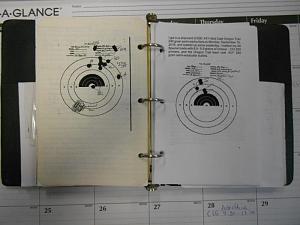I keep a notebook which handles 1/2 letter size pages, and which has tabs for each of the main calibers I load for. I print my own targets on letter size paper, and after I've shot, I scan them in as a jpg file. Then I insert them in the notebook after my notes on the particular load, which is also noted on the target along with the rifle or revolver used.


|
   
   
|


|





 Reply With Quote
Reply With Quote



















